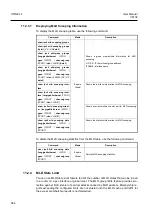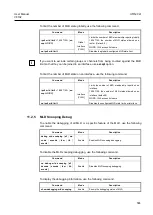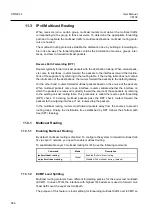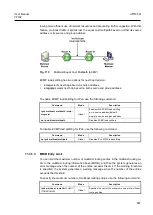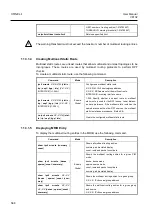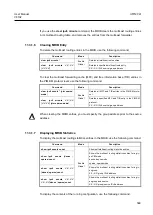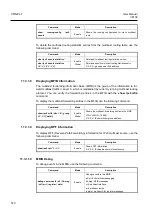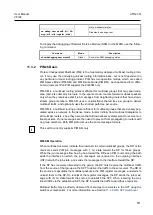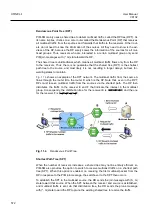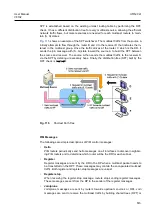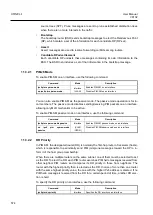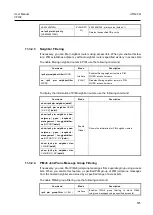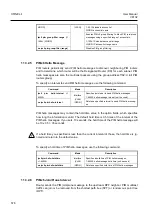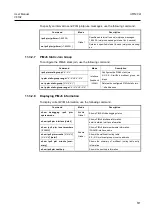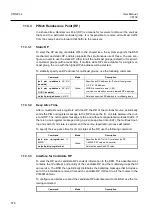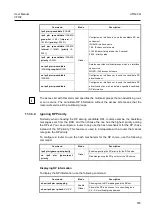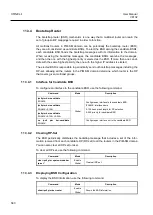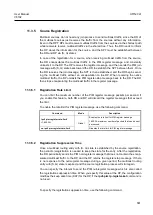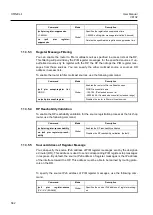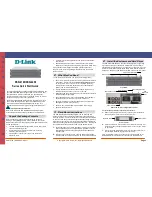
UMN:CLI
User Manual
V8102
578
11.3.3
PIMv6 Rendezvous Point (RP)
In a shared tree, Rendezvous Point (RP) is a means for receivers to discover the sources
that send to a particular multicast group. It is responsible to receive all multicast traffic
from the sources and to forward that traffic to the receivers.
11.3.3.1
Static RP
To elect the RP among candidate RPs in the shared tree, the system supports the BSR
mechanism and static RP, and also supports the simultaneous use of those. You can con-
figure a router to use the static RP either for all the multicast groups (default) or for specif-
ic multicast groups (with access lists). If multiple static RPs are available for a single mul-
ticast group, the one with the highest IPv6 address will be elected.
To statically specify an RP address for multicast groups, use the following command.
Command
Mode
Description
ipv6 pim rp-address X:X::X:X
[
override
]
Global
Specifies an RP address for IPv6 multicast groups.
X:X::X:X: RP address
WORD: access list name (1~99)
override: overrides dynamically learned RP mappings.
ipv6 pim rp-address X:X::X:X
WORD [
override
]
no ipv6 pim rp-address X:X::X:X
Deletes a specified RP address for multicast groups
11.3.3.2
Keep Alive Time
After a multicast source registers with the RP, the DR of the multicast source periodically
sends the PIM null-register message to the RP to keep the (S, G) state between the rout-
er and RP. The null-register message is the one without encapsulated multicast traffic. If
there is no null-register message during a given keep alive time (KAT), the multicast rout-
ing entry with (S, G) state is expired, and the source registration process will restart.
To specify the keep alive time for (S, G) states at the RP, use the following command.
Command
Mode
Description
ipv6 pim rp-register-kat
<1-
65535>
Global
Specifies the KAT for (S, G) states at the RP.
1-65535: KAT value(unit: second)
no ipv6 pim rp-register-kat
Deletes the specified KAT value.
11.3.3.3
Interface for Candidate RP
To elect the RP, each candidate RP sends its information to the BSR. This advertisement
contains the IP address and priority of the candidate RP and the multicast groups that it
can service. The BSR then periodically distributes the bootstrap message that includes a
set of the information received from each candidate RP (RP-set) to all the routers in the
PIM-SM domain.
To configure an interface to send the candidate RP advertisement to the BSR, use the fol-
lowing command.
Command
Mode
Description

